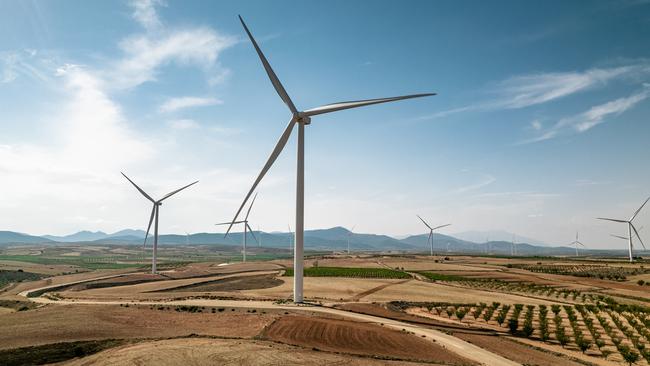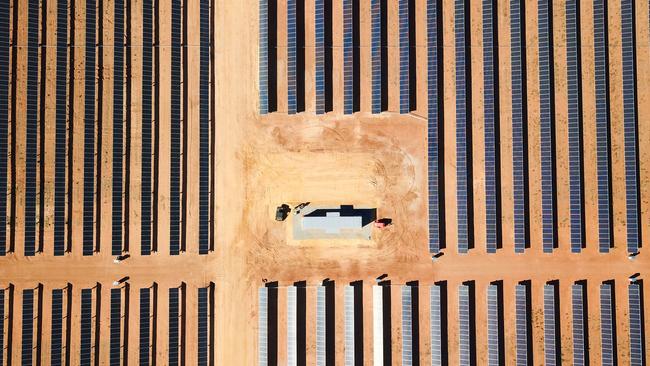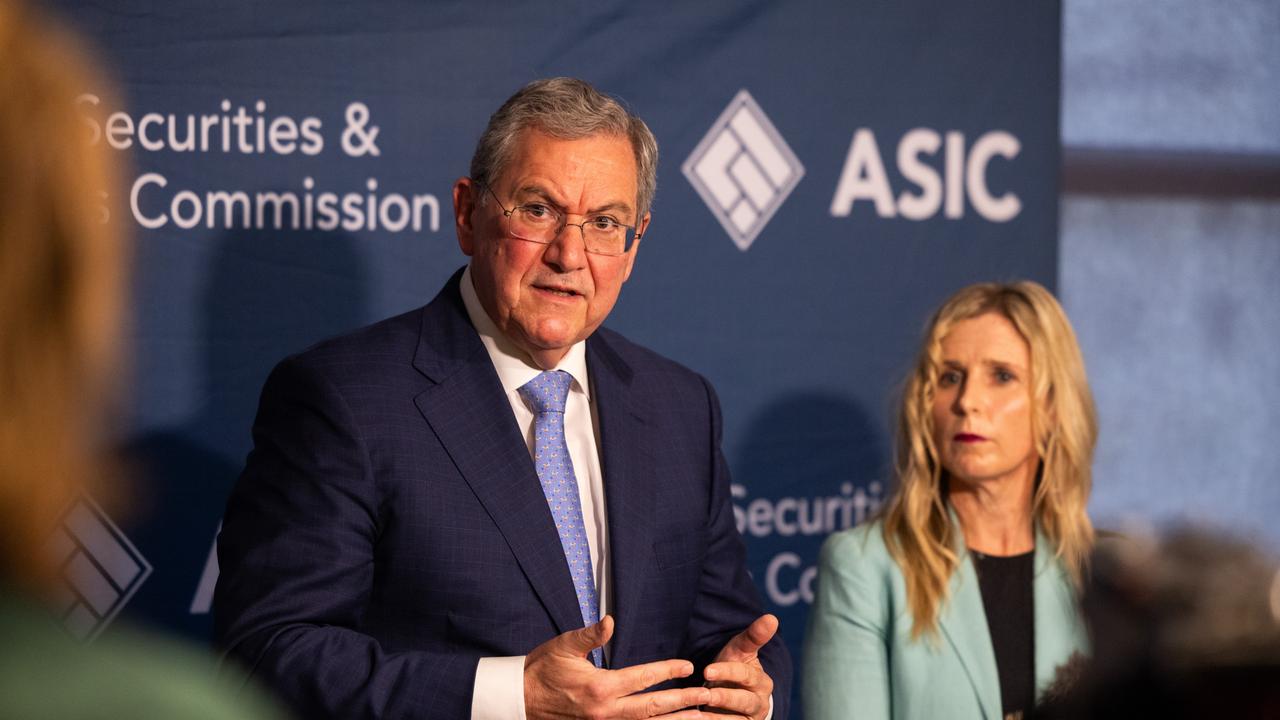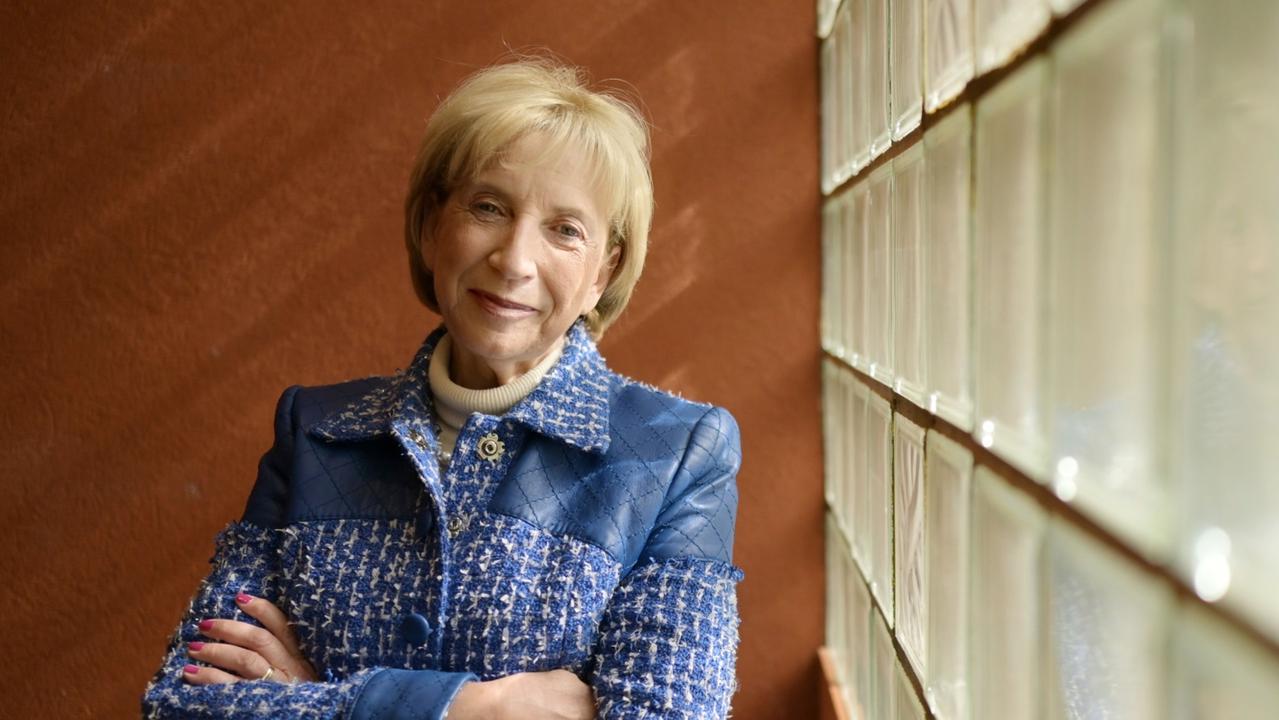Bowen’s green energy Capacity Investment Scheme to test power markets
The renewables program is enormous in ambition and promises to add further distortion to an already challenged energy market.

Business
Don't miss out on the headlines from Business. Followed categories will be added to My News.
The big first test of Chris Bowen’s massive intervention in the green energy market will come sooner than expected, with bids due in just a few weeks for the right to build a flood of renewables generation and batteries capacity across Victoria and South Australia.
The auction forms part of the first phase of the Capacity Investment Scheme that had been in place before the Climate Change and Energy Minister super-sized his centrepiece renewables program. The extended scheme was outlined last week, but financial details have been kept under wraps.

Bowen upgraded his existing CIS from 6 gigawatts of renewable energy generation and storage to 32GW – all with the optimistic timeline of six years. To put context around the scale of the program, this represents nearly half of the generation capacity currently in today’s national electricity market being rebuilt. The new scheme promises enough private investment to install 9GW of battery capacity and 23GW of variable capacity, which is largely expected to be wind and solar. As a rule, renewables require as much as three times the capacity to be built compared to the baseload generation it is replacing.
The Bowen scheme is enormous in ambition and when fully up and running is likely to result in an equally large contingent liability in the nation’s budget. The scale of it means companies and energy investors will most certainly redraw investment plans, with the program risking the crowding out of existing renewable projects that are in planning.
The design of the program is simple and reflects other government backed underwriting schemes around the world. In short, Canberra will provide revenue guarantees for selected renewables projects under a reverse auction with an agreed revenue floor and ceiling for projects to get investment moving.
The older 6GW scheme had been forecast to entice $10bn of investment in the power grid, although much of this may have flown into the market already. On the same measure, the updated Bowen scheme should generate more than $50bn of renewable energy investment.
However, a critical element of the CIS comes down to the pricing and ability for green energy investors to get a return, with the cap and floor determined on a project-by-project basis.
On Sunday, the price in Victoria spent much of the afternoon in negative territory, at one point falling below minus-$67/MWh as solar and wind were pumping into the grid. Across NSW, a hot night briefly pushed prices above $160/MWh. The capacity mechanism would seek to cut out these extreme swings. Under Bowen’s scheme, profits from the NSW price would go back to the government. In Victoria, the project owner would be protected from the losses, although it is likely under the capacity scheme the generator would too be encouraged to switch off production if prices turn negative for too long.
The scheme too threatens to undermine the businesses of the big gentailers of AGL and Origin over the medium term. Both were hoping to use their millions of customers to underwrite renewables for a model that also generated financial returns. Now it will be back to the drawing board for some projects they have in place.

Currently, a major upheaval is underway in renewables. The blowout in project costs around the world means purchase prices have soared. Investors too are becoming wary of underwriting schemes where the floor is set too low.
In the UK recently, no one turned up to a government tender aimed at building offshore wind power. At the same time, big players have written off billions on renewable projects where government-backed underwriting prices were set too low. With the smoother returns, investors will need to think of their projects under Bowen’s capacity investment scheme as more in line with heavily-regulated infrastructure returns. At this stage, it’s not clear what protections are in place for inflation.
Macquarie chief executive Shemara Wikramanayake earlier this month told investors that prices will need a reset for renewable investment to flow. She was quick to add that Macquarie, a big global investor in green energy, wasn’t caught up in the recent pricing pressures although it was impacting the timing of some asset sales.
“I think what this has done is hopefully given a bit of a wake-up call to people that are putting these offtakes in place that if they’re going to get the supply, they’re going to need to offer pricing that will attract private capital,” she said.
Bowen says the program cost remains commercial-in-confidence, although he pushed back on suggestions it would cost tens of billions of dollars. He also dismissed any prospect of nuclear — which is being adopted globally — of getting a start in the renewables race under the scheme.
It remains to be seen where the floor of the auction stands to be set, with Canberra to hold the aces in this.
“We are in control of what bids we accept, what bids we decline,” Bowen told ABC TV on Sunday. “Obviously we won’t be subsidising negative prices, but we will be calling for investors to come forward”.
Documents for the upcoming Victorian-South Australian project tell prospective investors that it will favour bids with low forecast cost. It also wants the lowest annual revenue floor, the lowest ceiling possible (more money going back to the government) and the shortest contract term possible — as this will require fewer years of revenue underwriting. This might be good for taxpayers, but without a strong market signal investors may look for better places to put their hard-earned capital.
Bowen’s program too incentives investment in generation over transmission, which is where the bottlenecks are emerging. Solar and wind farms are being built by they are far from the grid while securing community support for major transmission lines is a big challenge. In many ways, further reform and incentives in transmission will be a much tougher conversation.
johnstone@theaustralian.com.au
Originally published as Bowen’s green energy Capacity Investment Scheme to test power markets



